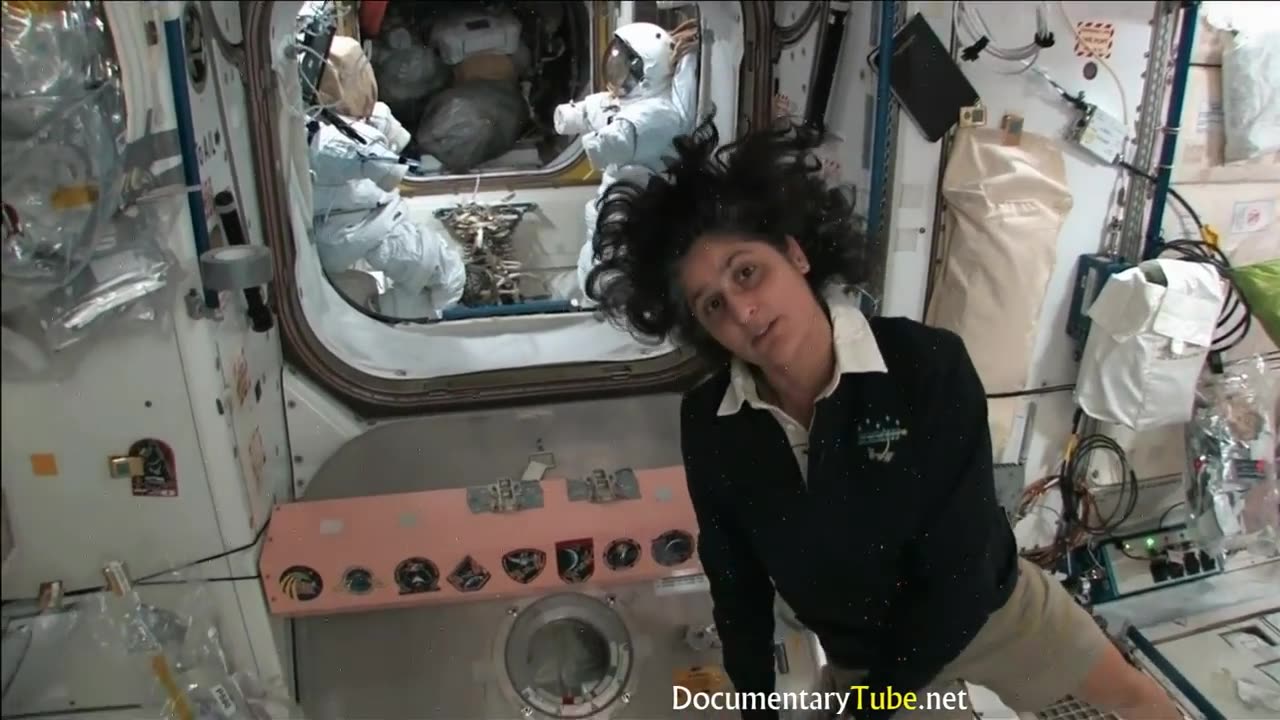Premium Only Content

How it works; THE international Space Station
The International Space Station (ISS) is a remarkable example of international cooperation and scientific advancement in space exploration. It serves as a space laboratory and living quarters for astronauts from various countries, allowing them to conduct research, technology demonstrations, and experiments in a microgravity environment. Here's how the ISS works:
1. Modular Design: The ISS is made up of various interconnected modules, each serving a specific purpose. These modules include living quarters, laboratories, storage areas, and more. The modules are assembled in orbit, with components launched into space by different countries using rockets.
2. International Collaboration: The ISS is a joint effort involving multiple space agencies, including NASA (United States), Roscosmos (Russia), ESA (European Space Agency), JAXA (Japan Aerospace Exploration Agency), and CSA (Canadian Space Agency). These agencies contribute modules, technology, equipment, and crew members to the ISS.
3. Microgravity Environment: The ISS orbits Earth at an altitude of approximately 400 kilometers (about 250 miles). This orbit allows the station to experience a state of continuous freefall, creating a microgravity environment that enables scientists to conduct experiments that wouldn't be possible on Earth.
4. Research and Experiments: The ISS is primarily used for scientific research. Astronauts and researchers conduct experiments in various fields, such as biology, physics, astronomy, and materials science. The microgravity environment allows scientists to study the effects of weightlessness on different phenomena and develop new technologies.
5. Living Conditions: The ISS provides living quarters for astronauts, equipped with sleeping areas, hygiene facilities, a galley for preparing food, and exercise equipment to counteract the effects of muscle atrophy and bone loss in microgravity.
6. Crew Rotation: The ISS is inhabited by a rotating crew of astronauts from different countries. Crew members typically spend several months aboard the station before returning to Earth. New crew members are sent to the ISS regularly to maintain operations and continue the research.
7. Resupply Missions: Regular resupply missions are conducted to deliver essential supplies such as food, water, equipment, and scientific experiments to the ISS. Cargo spacecraft from various nations are used for these missions.
8. Communication and Control: The ISS is in constant communication with ground control centers around the world. These centers monitor the station's systems, provide guidance to the crew, and ensure the safety of the astronauts.
9. International Partnerships: The ISS is a symbol of international cooperation, with different countries contributing expertise and resources to keep the station operational. This collaboration extends to research, where scientists from various nations work together on experiments and share the results.
-
 18:27
18:27
Machete Gaming
1 day ago $1.00 earnedThe FIFA Everyone Hated… But It BLEW My Mind
9.68K1 -
 39:53
39:53
pewculture
1 day agoThe Pew Culture Podcast #22 - MILE 22
909 -
 1:45:44
1:45:44
Tommy's Podcast
19 hours agoEpstein | E.M. Burlingame & John Cullen (TPC #1,782)
4.7K10 -
 LIVE
LIVE
Cewpins
11 hours agoStoned Gamer🔥Tony Hawk's Pro Skater 3 & 4💨420 !mj🍃!Giveaway
59 watching -
 7:48
7:48
The Official Steve Harvey
18 hours ago $1.01 earnedStop Waiting on the Right Time: Have Faith and Use Your Gift
16.2K5 -
 6:23
6:23
DropItLikeItsScott
16 hours ago $1.10 earnedTISAS B9R Double Stack / The BEST 1911 9mm??
11K3 -
 11:22
11:22
NikkoOrtiz
17 hours agoUnhinged Dark Memes
18.5K5 -
 49:10
49:10
Michael Knowles
20 hours agoBREAKING: 82 People Dead As Libs Blame Trump For Texas Flood | Ep. 1765
21.5K30 -
 1:13:01
1:13:01
SinCityCrypto
20 hours ago $0.91 earnedBitcoin Rallies as Trump Extends Tariff Pause
14.3K1 -
 20:17
20:17
BlaireWhite
1 day agoExposing Lilly Tino: The Trans TikTok Predator
14.9K16